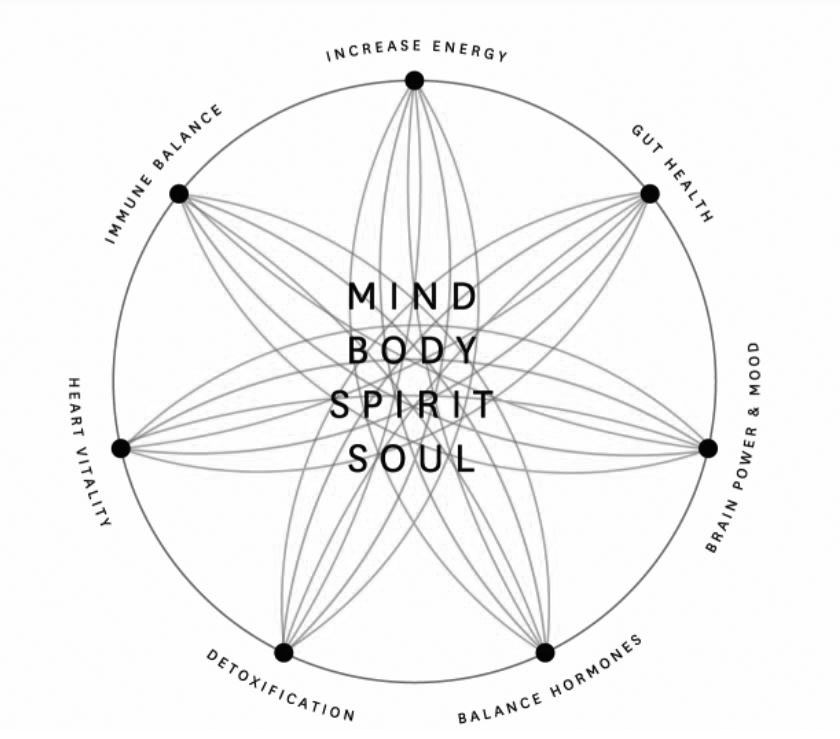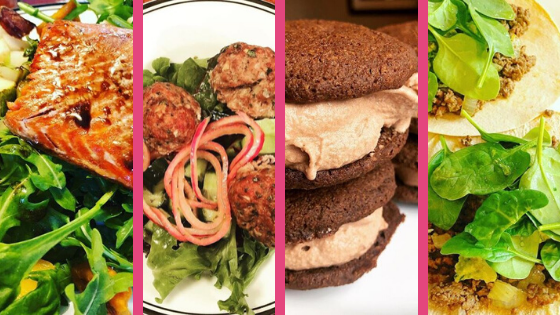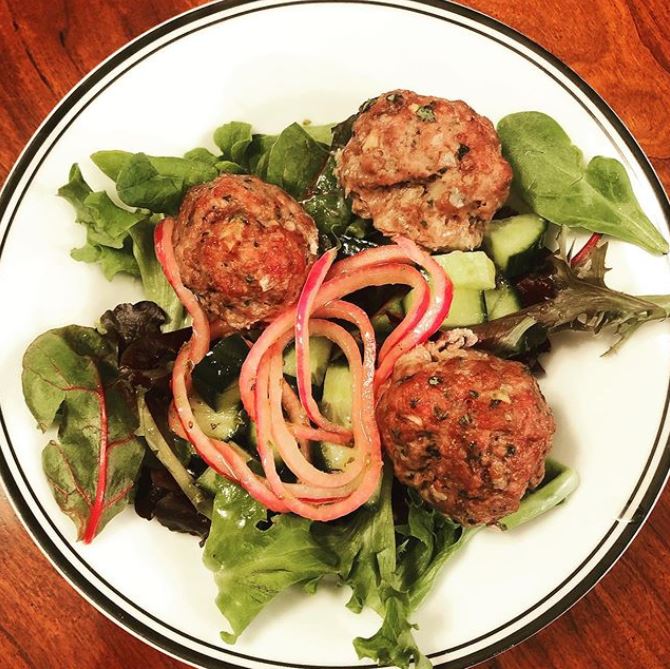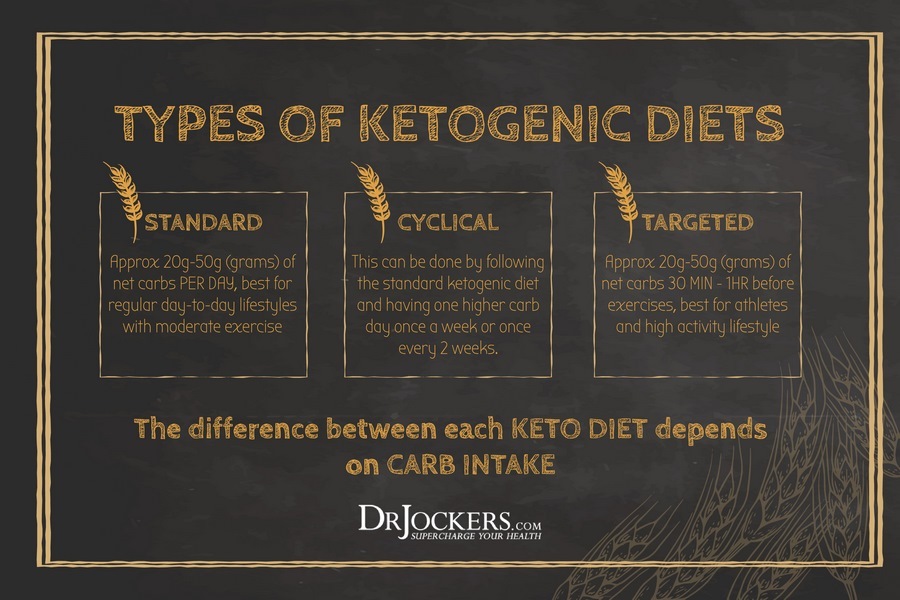Do you ever wonder what the root cause of your headaches is? Probably not in the middle of having one! Realistically, you just want it gone. The functional medicine approach does not stop at the symptoms. It is a whole-body approach that asks what the root cause of those symptoms is. It’s at the moment you realize that your headaches don’t start in your head, that you are on your way to healing.
4 Types of Headaches
There are 4 different types of headaches, each with their own distinct symptoms but all are debilitating, no matter the form. Distinguishing the symptoms will help you categorize the type. These types are migraines, tension headaches, cluster headaches, and secondary headaches. Let’s explore the symptoms of each.
Migraine Headaches
The most severe and longest-lasting of all types of headaches are migraines. Migraines often times are preceded by an aura, flashes of light or blind spots. Sufferers may have difficulty speaking and experience tingling on one side of the face, an arm, or a leg. The throbbing or pulsing pain lasts from hours to days and is normally felt on one side of the head. Other symptoms of migraines can include light and noise sensitivity, nausea, and vomiting.
Tension Headaches
The most common headache is called a tension headache, or stress headache, It feels much like squeezing or “vice” like feeling around the head, temples, and upper neck. This type of headache is continuous and lasts anywhere from a half-hour to a week and symptoms can include trouble sleeping and difficulty concentrating.
Cluster Headaches
Cluster headaches, lasting 15 minutes to 3 hours occur in cluster periods, over a longer period of time. These are considered the most painful or excruciating types of headaches developing on one side of the head, in or around one eye and one side of the face. The severe, burning pain strikes at night.
Secondary Headaches
Secondary headaches are those that are caused by other conditions. These conditions can include sinus issues; high blood pressure, overexertion, medication side effect, withdrawal, or hormone imbalances, just to name a few.
The Functional Medicine Treatment of Headaches
Functional Medicine treats all types of headaches with success by looking deeper at the causes. We have remarkable success in treating headaches because we look deeper at the causes and treat accordingly. Often, more than one underlying cause contributes to each headache. Conventional medicine treats headaches and migraines with over the counter and prescription pain medications.
Noting the History of Your Headaches
Linden & Arc Vitality Institute doctors and practitioners will take thorough notes on the history of your headaches, along with an in-depth look at your full health story. We examine the location, type of pain, measured intensity, duration, and any other symptoms associated to determine the potential causes of the type of headache you are suffering from. We use the LMMD 7 Core Nodes of Healing approach to assessing your individual root causes and dig deeper. Let’s apply Linden & Arc Vitality Institute 7 Core Nodes of Healing to your headache relief.
7 Core Nodes of Healing For Headache Relief
The Gut
One of the 7 Core Nodes of Healing is the gut. Managing the gut and food reactions in terms of managing headaches could be the answer to headache relief. Food sensitivities and allergies are some of the most common reasons for headaches that we see in the clinic. You may not have symptoms immediately with a delayed IgG food sensitivity, the inflammation that grumbles from repeated exposure to a triggering food can result in daily headaches for some.
Histamine and Tyramine food reactions are common triggers of headaches and migraines. As well, dysbiosis, an imbalance in good and bad bacteria, can trigger headaches. An example of dysbiosis is high opportunistic candida overgrowth in the gut.
Hormones
High levels of cortisol, one of our main stress hormones, can lead to headaches. Therefore, take note of the timing of the headaches during your menstrual cycle. Typically, migraines are caused by an imbalance in Estrogen and Progesterone in women. This is why we typically see a surge in headache symptoms the week leading up to the period. Functional Medicine physicians call this Estrogen Dominance. High levels of Xenoestrogens in our environment and inflammation both cause headaches as well. We can manage migraines/ headaches in a cyclical fashion, using supplements or hormones at different stages of the menstrual cycle.
Energy
Mitochondria, the little ‘powerhouses’ or ‘factories’ in the cells, make our body’s energy (or ATP). They do this using nutrient substrates and oxygen. These mitochondria can function sluggishly from nutrient deficiencies, inflammation, chronic infection, and toxicity. This leads to a cascade of events that causes “energy failure” in the nerve tissue. This energy failure can activate headaches.We are able to test the Krebs cycle to assess for mitochondrial dysfunction and can test the individual nutrients that we know fuel the mitochondria. Riboflavin (B2), coenzyme Q10, magnesium, niacin (B3), carnitine, alpha-lipoic acid supplements are very effective in giving the mitochondria the boost that they need. Intravenous nutrients can start functioning much quicker in someone with an unhealthy gut.
Detoxification
The body needs regular detoxification to remove the many external toxins that we are faced with on a day to day basis. These exposures come from many different sources. These sources can be anything from pesticides on our food to the air we breathe, the water we drink, chemicals in our cosmetics, and cleaning products. We are exposed to other endocrine disrupters in places like receipts or plastic bottles. Detoxification system overwhelm and poor detoxifying genes allow our bodies to accumulate toxins much easier. These are well established in the literature to cause many health conditions. This “backlog” of toxins in the body can cause many different symptoms, one of which is headaches. Fortunately, we are able to test for all of the different chemicals and metals that we know to be an issue. In a stepwise, staged process, we teach the body how to detoxify more efficiently and see improvement in many symptoms including headaches.
Immune Balance/ Chronic Inflammation
Chronic inflammation usually appears from infective triggers, known as “Biotoxins.” Biotoxins can appear from the inflammatory sources from food, gut imbalances, hormone imbalance, and toxin accumulation. Living toxins cause headaches. Examples are mold, Lyme, virus, or bacteria.
In genetically vulnerable individuals, these can trigger an inflammatory response termed Chronic Inflammatory Response Syndrome. This is a multi-symptom, multi-system disease, with headaches and other cognitive disruptions being very common. Mast cell activation syndrome, commonly associated with this, leads to the release of Histamine & other inflammatory cytokines, which can cause headaches. These are exceedingly common in our very ill patient population. We take a detailed history and analyze it appropriately.
Brain Power and Mood
Brain neurotransmitter’s imbalances can cause headaches and mood issues. A high level of glutamate, an excitatory neurotransmitter, can lead to headaches and mood changes. It is important to rule out underlying neurological disorders or syndromes as a cause of headaches. Your functional medicine physician will be able to determine what to look for based on a history and examination.
Heart Vitality
Your physician will test your heart vitality with regard to headaches. There may be vascular (blood vessel) contributions to your migraines, from vascular activation of the nervous system. There is communication between blood vessels, nerve cells, and possibly Mast cells (mentioned above) in the activation of headaches. Headaches can be caused by high blood pressure so this is an important cause to initially rule out. We can establish from your personal and family history, and other lab results whether you have risk factors for the above.
Structural Issues
Cervical Spine, Head, Temporomandibular joint (TMJ), and Dental structural issues are all very closely related. Imbalances in one area can cause disruptions in the other. A detailed history of previous injuries is extremely important. Even “a bump to the head” or hidden dental infections or TMJ can be significant enough to throw things out of balance and contribute to headaches. We refer our patients to brilliant Nucca Chiropractors, Physio/ manual therapists and World Class Biological dentists with experience to assess these areas.
Mind Body Spirit Soul
The doctors at Linden & Arc Vitality Institute always look back to the emotional and spiritual contributions to your symptoms. Your mind, body, spirit, and soul are connected and one out of balance leads to all in illness. Addressing underlying issues helps to start the healing journey. We hold emotions and stress in our cells. Therefore, physical symptoms arise if these emotions have been held or suppressed.
Functional medicine practitioners have many tools to help you get the bottom of your headaches. You see from this discussion why medications fall short and do not help many headaches. If we look in the right places and treat your headaches with the individual care that they deserve, true healing and resolution can occur!
A HANDY RESOURCE
To track your symptoms: https://migrainetracker.ca. This can be useful for your physician to determine what type of headache you are having, which will help determine the root cause.
REFERENCES
- Prevalence of Migraine in the Canadian Household Population. Pamela L Ramage-Morin 1 , Heather Gilmour 1. 2014 Jun;25(6):10-6. PMID: 24941316
- Front Cell Neurosci. 2018; 12: 233. Published online 2018 Aug 3. doi: 10.3389/fncel.2018.00233. PMCID: PMC6088188
- Vascular Contributions to Migraine: Time to Revisit? Bianca N. Mason1,† and Andrew F. Russo1
- Alpay K, Ertas M, Orhan EK, Ustay DK, Lieners C, Baykan B. Diet restriction in migraine, based on IgG against foods: a clinical double-blind, randomised, cross-over trial. Cephalalgia. 2010;30(7):829-837. doi:10.1177/0333102410361404
- Silberstein SD. Preventive migraine treatment. Continuum. 2015;21(4 Headache):973-989. doi:10.1212/CON.0000000000000199
- Stovner LJ, Nichols E, Steiner TJ, et al. Global, regional and national burden of migraine and tension-type headache, 1990-2016: a systematic analysis for the Global Burden of Disease Study 2016. Lancet Neurol. 2018;17(11):954-976. doi:1016/S1474-4422(18)30322-3
- Pringsheim T, Davenport W, Mackie G, et al. Canadian Headache Society guideline for migraine prophylaxis. Can J Neurol Sci. 2012;39(2 Suppl 2):S1-59.
- Hajihashemi P, Askari G, Khorvash F, Reza Maracy M, Nourian M. The effects of concurrent coenzyme Q10, L-carnitine supplementation in migraine prophylaxis: a randomized, placebo-controlled, double-blind trial. Cephalalgia. 2019;39(5):648-654. doi:10.1177/0333102418821661
- Bektas H, Karabulut H, Doganay B, Acar B. Allergens might trigger migraine attacks. Acta Neurol Belg. 2017;117(1):91-95. doi:10.1007/s13760-016-0645-y
- Sadeghi O, Maghsoudi Z, Khorvash F, Ghiasvand R, Askari G. The relationship between different fatty acids intake and frequency of migraine attacks. Iran J Nurs Midwifery Res. 2015;20(3):334-339
- Köseoglu E, Talaslioglu A, Gönül AS, Kula M. The effects of magnesium prophylaxis in migraine without aura. Magnes Res. 2008;21(2):101-108.
- Andreeva VA, Szabo de Edelenyi F, Druesne-Pecollo N, Touvier M, Hercberg S, Galan P. Macronutrient intake in relation to migraine and non-migraine headaches. Nutrients. 2018;10(9):E1309. doi:10.3390/10091309
Author
Dr. Michelle van der Westhuizen, MD














